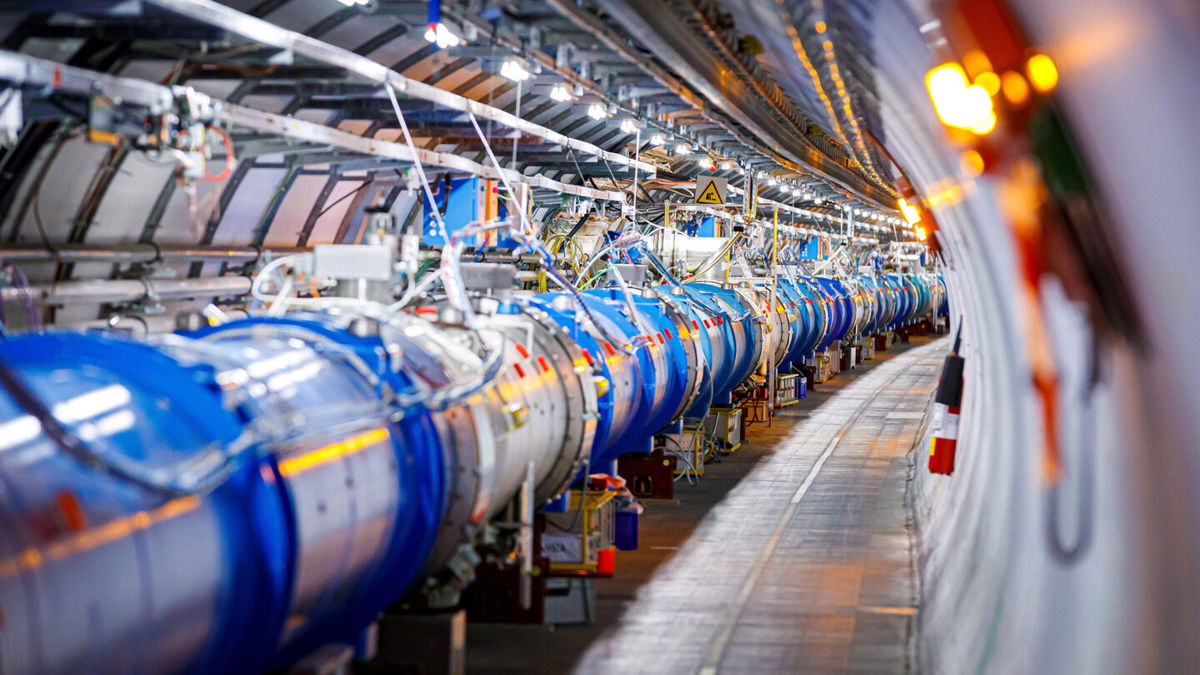CERN’s Large Hadron Collider fires up for third time to unlock more secrets of the universe

By Katie Hunt, CNN
A decade ago, the Large Hadron Collider, Earth’s most powerful particle accelerator, proved the existence of an subatomic particle called the Higgs boson — thought to be a fundamental building block of the universe dating back to the big bang billions of years ago.
Now, physicists at the European Organization for Nuclear Research (CERN) on the Swiss-French border are restarting the collider with the aim of understanding more about the Higgs boson, other subatomic particles and the mysteries of dark matter — an invisible and elusive substance that can’t be seen because it doesn’t absorb, reflect or emit any light.
Consisting of a ring 27 kilometers (16.7 miles) in circumference, the Large Hadron Collider — located deep underneath the Alps — is made of superconducting magnets chilled to ‑271.3°C (-456 F), which is colder than outer space. It works by smashing tiny particles together to allow scientists to observe them and see what’s inside.
Proton beams have already been circulating in the accelerator complex since April, when it was switched on after being closed for three years of maintenance and upgrades.
On Tuesday, scientists at CERN will begin collecting data for their experiments, and the Large Hadron Collider will run around the clock for almost four years. It’s the third run for the massive machine, with greater precision and discovery potential than ever before thanks to the upgraded data readout and selection systems, as well as new detector systems and computing infrastructure.
“When we do research we hope that we will find something unexpected, a surprise. That would be the best result. But of course the answer is in the hands of nature, and it depends on how nature answers open questions in fundamental physics,” said Fabiola Gianotti, CERN Director-General, in a video posted on CERN’s website.
“We are looking for answers to questions related to dark matter, to why the Higgs boson is so light and many other open questions.”
Understanding the Higgs boson
Physicists François Englert and Peter Higgs first theorized the existence of the Higgs boson in the 1960s. Physics’ Standard Model lays out the basics of how elementary particles and forces interact in the universe. But the theory had failed to explain how particles actually get their mass. Particles, or bits of matter, range in size and can be larger or smaller than atoms. Electrons, protons and neutrons, for instance, are the subatomic particles that make up an atom. Scientists now believe that the Higgs boson is the particle that gives all matter its mass.
In 2013, one year after the particle’s discovery, Englert and Higgs won a Nobel prize for their far-sighted prediction. But there’s still much that’s unknown about the Higgs boson, and unlocking its secrets may help scientists understand the universe at its smallest scale and some of the biggest mysteries in the cosmos.
The Large Hadron Collider, which opened in 2008, is the only place in the world where the Higgs boson can be produced and studied in detail. The third run got successfully underway at 10.47 a.m. ET on Tuesday.
In the latest round of experiments, CERN’s scientists will study the properties of matter under extreme temperature and density, and will also be searching for explanations for dark matter and for other new phenomena, either through direct searches or — indirectly — through precise measurements of the properties of known particles.
“While all the results obtained so far are consistent with the Standard Model, there is still plenty of room for new phenomena beyond what is predicted by this theory,” said CERN theorist Michelangelo Mangano in a news release.
Dark matter is thought to make up most of the matter in the universe and has previously been detected by its ability to create gravitational distortions in outer space.
“The Higgs boson itself may point to new phenomena, including some that could be responsible for the dark matter in the universe,” said Luca Malgeri, a spokesperson for CMS (Compact Muon Solenoid), one of the four big Large Hadron Collider experiments, which is built around a huge electromagnet.
The-CNN-Wire
™ & © 2022 Cable News Network, Inc., a WarnerMedia Company. All rights reserved.
CNN’s Sara Spary and Nick Thompson contributed to this report
